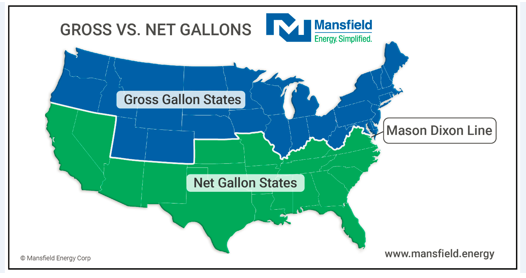
How Laws of Nature Impact Your Fuel Bill
Prices are moving lower this morning following two days of gains despite constructive crude inventory data. Crude traded up nearly a dollar during yesterday’s session before closing the day just 27 cent higher. This morning, crude is reversing those gains, trading down 89 cents at $68.28.
Fuel prices are also dipping lower this morning in the wake of bearish inventory estimates. Both gasoline and diesel saw strong gains yesterday, each closing over 3 cents higher despite losing some slight momentum after the API report was released. Prices are feeling more of the impact from bearish data this morning with both products trading in the red. Diesel has given up just over a penny this morning and is currently trading at $2.1587. Gasoline has lost over 2 cents to trade at $2.0757 currently.
The API reported mixed inventory results yesterday. Crude drew by 6 MMbbls, nearly double the amount expected by the market. Although the reported draw should be propelling crude prices upward, geopolitical tension and the growing expectation that U.S.-China trade tensions will result in lower Chinese imports of U.S. crude are keeping downward pressure on WTI prices. A surprise gasoline build and a larger-than-expected build in diesel stocks are also contributing to today’s negative price action.
Net verses Gross Gallons – What’s the difference?
Have you ever questioned why there are two different gallon amounts listed on a BOL (Bill of Lading) for the same delivery? You may have ordered a specific gallon amount (gross) but then were invoiced for a net amount. It’s a common quandary for fuel purchasers.
How Laws of Nature Impact Your Fuel Bill
The discrepancy between net and gross fuel purchasing stems from a law of nature called Thermal Expansion. When molecules are heated, they begin to move more quickly, causing the substance to expand. Conversely, when the molecules cool they move more slowly and the substance contracts. It’s what happens when you bring a helium balloon into a cold room. As the molecules cool, they lose energy and condense – decreasing the volume inside the balloon and causing it to shrivel and sink.
Like these substances, fuel also expands and contracts depending on the temperature. For example, when 1,000 gallons of fuel is delivered to a location in Texas on a hot summer day, the fuel is pumped into a cool underground storage tank with an average temperature of 50 degrees. The fuel loses volume as it cools. In this situation, a full 1,000 gallons may have been delivered, but the location will have less than 1,000 gallons in its tank. Continue reading…
This article is part of Crude
Tagged:
MARKET CONDITION REPORT - DISCLAIMER
The information contained herein is derived from sources believed to be reliable; however, this information is not guaranteed as to its accuracy or completeness. Furthermore, no responsibility is assumed for use of this material and no express or implied warranties or guarantees are made. This material and any view or comment expressed herein are provided for informational purposes only and should not be construed in any way as an inducement or recommendation to buy or sell products, commodity futures or options contracts.








